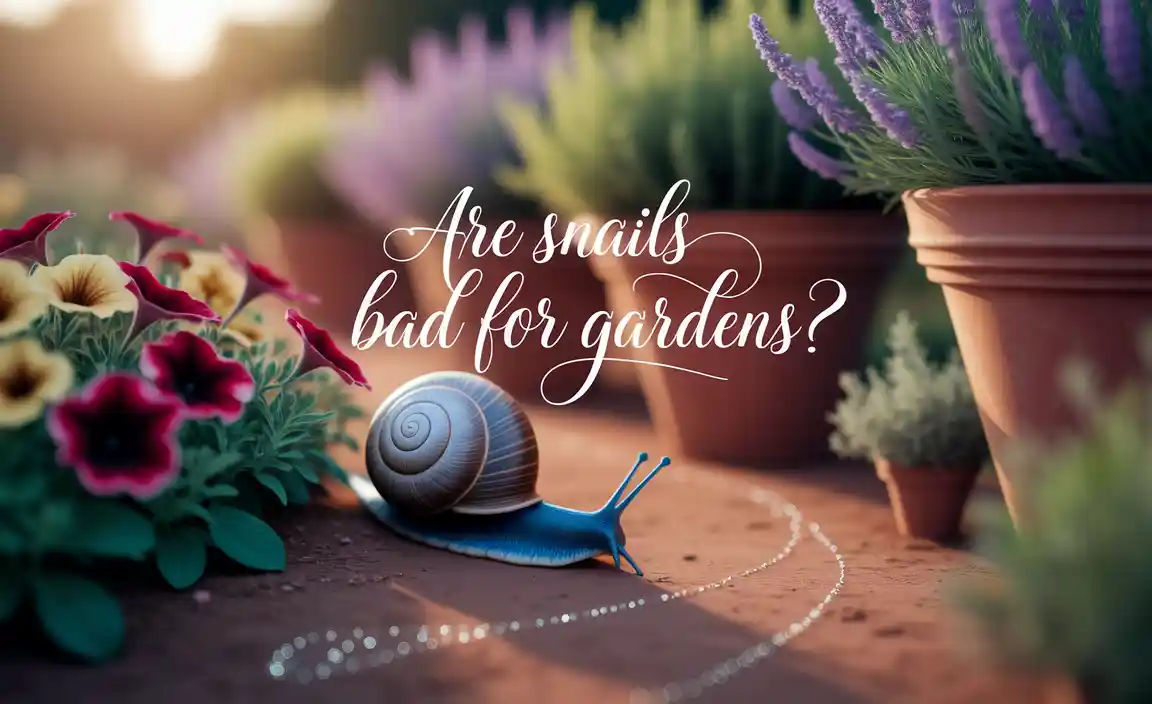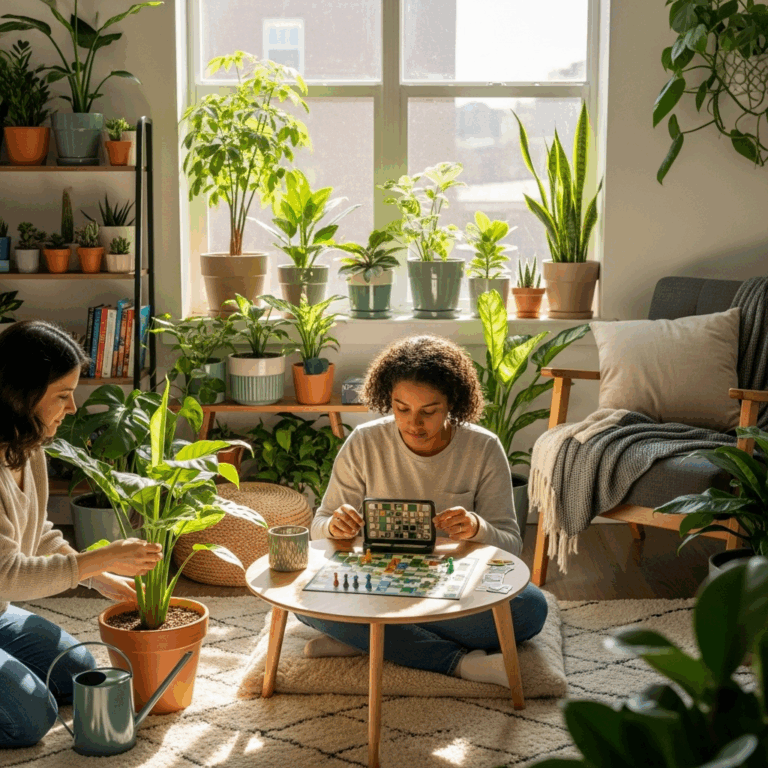Pot for Plants Indoor: Your Genius & Essential Guide to Happy Houseplants!
Choosing the right pot for your indoor plants is crucial for their health and growth. This guide simplifies the process, helping beginners select the perfect pot to ensure vibrant, thriving greenery in your home. From drainage to material, we’ve got you covered.
Welcome to the wonderful world of indoor gardening! Bringing the beauty of nature inside is a joy, but sometimes our leafy friends can seem a bit fussy. One of the most common puzzle pieces for new plant parents is selecting the right pot. It might seem simple, but a pot does so much more than just hold soil – it’s a vital part of your plant’s home! Don’t worry if you’re feeling a little lost; this guide is here to help you navigate the choices with ease. We’ll break down the essentials, making sure your plant’s pot is a perfect fit for a happy, healthy life. Let’s get your plants thriving!
Why the Right Pot Matters for Your Indoor Plants
Think of a pot as your plant’s home. Just like we all need the right kind of shelter to stay comfortable and healthy, plants need a suitable pot to flourish. The pot isn’t just about looks; it plays a big role in how your plant gets water, air, and support. The wrong pot can lead to soggy roots, unhealthy growth, or even plant demise. But with the right choice, you’re setting your plant up for success, ensuring it can grow strong and beautiful. Let’s dive into what makes a pot “just right.”
Understanding Pot Basics: Size, Shape, and Drainage
Every plant has unique needs, and the pot is central to meeting them. Size, shape, and, most importantly, drainage are key factors to consider. Getting these right means happy roots and a happy plant.
Pot Size: Not Too Big, Not Too Small
Choosing the right size pot is like picking clothes that fit perfectly – not too tight, not too loose.
Too Small: If a pot is too small, the plant’s roots will quickly run out of space. This can stunt growth, dry out the soil too fast, and stress the plant. You might see smaller leaves or slower overall development.
Too Big: A pot that’s too large can hold too much soil. This excess soil stays wet for too long, which is a common cause of root rot. It can also encourage the plant to focus its energy on growing roots instead of foliage, meaning you might not see many leaves for a while.
As a general rule of thumb, when repotting, aim for a pot that is only about 1-2 inches larger in diameter than the current pot the plant is in. If the plant is root-bound (roots are circling tightly around the bottom of the pot), it’s definitely time for an upgrade.
Pot Shape: Aesthetic Meets Functionality
While we often choose pots based on how they look, their shape also influences how the plant grows.
Tapered Pots (Classic Nursery Pots): These are wider at the top than the bottom. They are easy to remove plants from and are great for plants that might outgrow them relatively quickly.
Straight-Sided Pots: These are uniform in width from top to bottom. They offer a clean, modern look and can be good for plants that you want to keep in a specific size for a longer period, as they provide more stability for the soil.
Wide, Shallow Pots (Pancake Pots): Ideal for plants with shallow root systems, like succulents or many alpine plants. They allow for good airflow and prevent the soil from staying too wet.
Tall, Narrow Pots: These are better suited for plants with deep taproots, giving them the vertical space they need to grow downwards.
The Non-Negotiable: Drainage Holes!
This is, perhaps, the most critical feature of any pot for your indoor plants. Drainage holes are essential. Without them, excess water has nowhere to go. Waterlogged soil suffocates plant roots, leading to fungal diseases and root rot.
If you fall in love with a decorative pot that doesn’t have drainage holes, don’t despair! You have a couple of genius options:
- Use a Liner Pot: Place your plant in a plastic nursery pot (the kind it came in, or one with drainage holes) that fits inside your decorative pot. Once the plant is potted up in the liner, simply place the liner inside the decorative pot. You’ll need to lift the liner out to water, allowing the excess to drain away freely before placing it back.
- Drill Your Own Holes: With the right tools and a bit of caution, you can add drainage holes to many types of pots, especially terracotta or plastic ones. For ceramic or porcelain pots, this requires a special drill bit, so it might be best to save this for simpler materials if you’re a beginner.
If a pot has absolutely no drainage at the bottom, it’s a “cachepot.” A cachepot is purely decorative and is meant to hold another pot with drainage inside it.
A Deeper Dive: Pot Materials and Their Pros & Cons
The material of your pot can significantly impact your plant’s environment. Different materials offer varying benefits in terms of breathability, moisture retention, and durability.
| Material | Pros | Cons | Best For |
|---|---|---|---|
| Terracotta/Clay | <ul
|
<ul
|
<ul
|
| Plastic/Resin | <ul
|
<ul
|
<ul
|
| Ceramic/Porcelain | <ul
|
<ul
|
<ul
|
| Concrete/Cement | <ul
|
<ul
|
<ul
|
| Metal | <ul
|
<ul
|
<ul
|
| Fabric/Grow Bags | <ul
|
<ul
|
<ul
|
The “Self-Watering” Pot: A Beginner’s Best Friend?
Self-watering pots have gained a lot of popularity, and for good reason, especially for beginners! They work by having a reservoir at the bottom that stores water. A wicking system then draws water up into the soil as the plant needs it.
How They Work:
<ul
Pros:
<ul
Cons:
<ul
External Resource: For more on plant watering and how it relates to pot choice, the Royal Horticultural Society (RHS) offers excellent guidance on watering plants, which is directly related to pot selection.
Step-by-Step Guide: Potting Your Plant Like a Pro
Ready to give your plant a beautiful new home? Follow these simple steps to pot up your plant with confidence.
What You’ll Need:
<ul
The Potting Process:
- Prepare the New Pot: If using a terracotta pot, it’s a good idea to soak it in water for about 15-30 minutes before use. This prevents the dry clay from wicking too much moisture away from the soil initially. If using a plastic or glazed ceramic pot, a quick rinse is usually sufficient.
- Add a Base Layer of Soil: Pour enough fresh potting mix into the bottom of the new pot so that when you place your plant in it, the top of the plant’s root ball will sit about an inch below the rim of the new pot. This space is crucial for watering!
- Remove Plant from Old Pot: Gently tip the old pot on its side and carefully slide the plant out. If it sticks, you can tap the sides of the pot or use a trowel to loosen the soil around the edges. If your plant is severely root-bound, you might need to gently tease apart some of the circling roots with your fingers or a clean tool. Don’t be afraid to give those roots a little encouragement to grow outwards!
- Position Your Plant: Place the plant in the center of its new pot, on top of the soil layer you added. Ensure it’s sitting at the same depth it was in its old pot.
- Fill with Potting Mix: Begin filling the space around the root ball with more potting mix. Use your hands or a trowel to gently firm the soil as you go. You want to eliminate large air pockets, but avoid packing the soil down too tightly, as this can hinder root growth and drainage.
- Water Thoroughly: Once the pot is filled, water your plant generously. Water until you see it running out of the drainage holes at the bottom. This helps settle the soil and removes any remaining air pockets.
- Clean Up and Place: Wipe down the outside of your pot and any spilled soil. Place your freshly potted plant in its desired location.
Choosing the Right Potting Mix
The soil you use is just as important as the pot itself! Different plants have evolved to thrive in specific conditions, and your potting mix should mimic that.
General Houseplant Mix: A good all-purpose blend for most common houseplants like Pothos, Philodendrons, and Spider Plants. It usually contains peat moss or coco coir for moisture retention, perlite or vermiculite for aeration, and compost for nutrients. Look for mixes from reputable brands.
Cactus & Succulent Mix: This is much grittier, with a higher proportion of sand, perlite, and pumice. This allows for excellent drainage, which is vital for plants that are prone to root rot in soggy conditions.
Orchid Mix: Typically a chunky mix of bark chips, charcoal, and perlite. Orchids are epiphytes in nature, meaning they grow on other plants and need a lot of air around their roots and very fast drainage.
Seed Starting Mix: Very fine and light, designed for delicate new seedlings. Not usually suitable for mature houseplants.
Tip: You can often amend a general potting mix to better suit your plant’s needs. For instance, adding extra perlite or pumice will improve drainage for plants that prefer it drier.
Common Indoor Plant Potting Issues and How to Solve Them
Even with the best intentions, potting can sometimes present small challenges. Here are some common issues and simple fixes.
Issue: My Potting Mix Stays Too Wet
Likely Cause: Pot too large, lack of drainage holes, soil too dense, or overwatering.
Solutions:
<ul
Issue: My Plant Dries Out Too Fast
Likely Cause: Pot too small, pot material too porous, or not watering enough.
Solutions:
<ul
Issue: My Plant Seems Unstable or is Leaning
Likely Cause: Pot is too shallow or too light for the plant’s size or weight.
Solutions:
<ul
External Link: To understand how soil pH can affect your plant’s ability to absorb nutrients, this article from Gardening Know How explains soil pH, which is indirectly influenced by pot material and watering practices.
Frequently Asked Questions (FAQ)
Q1: How often should I repot my indoor plants?
Most indoor plants benefit from repotting every 1-2 years, or when they become root-bound. Signs include roots growing out of drainage holes, water running straight through the pot, or the plant drying out very quickly.
Q2: Can I use any old pot for my plants?
While you can technically put a plant in any container, it’s


